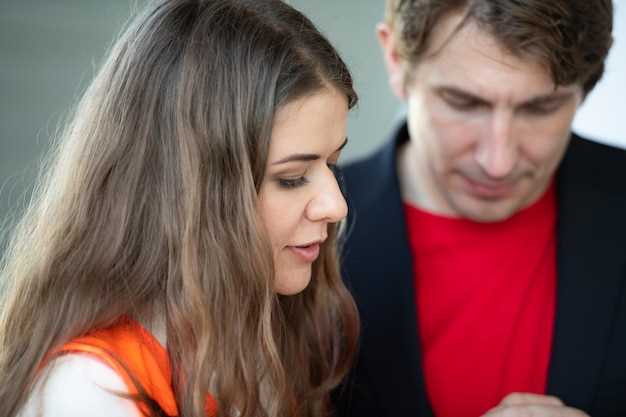Block exactly 2 x 30-minute slots on your calendar (for example, Tue 19:00–19:30 and Sat 11:00–11:30). This simple scheduling creates some spontaneity: because each slot is protected you can accept unexpected invitations and still keep core routines. Absolutely mark these slots as non-negotiable; most professionals reclaim at least 90 minutes per week compared to ad-hoc attempts. The fact that small blocks feel manageable reduces avoidance when work is long and demanding.
Audit your calendar to identify three primary reasons for current busyness: overlapping projects, passive obligations, and weak boundaries. Before committing to new dating opportunities apply a 48-hour decision rule: you need to check whether the meeting matches priorities and whether you can reallocate at least 60 minutes per week. Perhaps replace a single 90-minute low-value task by a 30-minute walk-and-talk; net gain equals 60 minutes weekly and prevents long stretches of social scarcity.
Create a short RSVP protocol: reply within 24 hours, propose a 30–40 minute slot, and set one measurable outcome so you know by minute 35 whether a spark exists. If not, close politely and move on. To encourage deep connection despite limited availability prepare three focused questions and one shared micro-activity that can be completed in under 45 minutes; that approach helps you have memorable dates without sprawling commitments.
Decide when to say yes: accept no more than two weeknight meetings and one weekend morning per week, so you should preserve recovery hours. Build some flexibility into your plan to capture the unexpected: keep one monthly slot unbooked for spur-of-the-moment meetings. Just small changes like these ensure you have availability for close moments and still meet professional demands.
Spontaneity audit: when did you last do something unplanned?
Reserve a 90-minute weekend slot each week labeled “spontaneity” and keep it unplanned: use that window to do one unexpected action (pop into costco, take a different route, accept a last-minute invite) and record when you felt most alive.
Audit your last 12 weeks of calendar entries: count dates that were truly spontaneous versus planned, calculate the percentage, and treat <10% as a signal you should rebalance. Note the fact that barriers like busyness, lack of physical space, or an empty weekday schedule often block action; listing reasons helps you confront them and ask yourself which are solvable. For introverts, perhaps build a short recovery buffer so you just have deep downtime after an unplanned outing. Most people benefit from making a simple rule – one micro-adventure per week – which nudges both mind and heart; there are some measurable wellbeing gains, and this practice shifts expectations about dating and social life.
Set targets: you should aim for 1–2 spontaneous acts weekly and tweak until you feel a spark; track for 8 weeks and close the feedback loop by noting what worked. Carry a small “yes” card for moments of hesitation, saying yes to low-stakes options, and absolutely keep a shortlist of low-cost go-tos (coffee, art walk, costco impulse buy) so youre not paralyzed before getting something unexpected. Keep a tiny ritual that creates the magic you love – a playlist or a physical note – that frees room for curiosity and something real; testing small shifts proves you can reclaim lifeor routines. Evidence on novelty and mental health is available at https://www.apa.org.
How to quickly log your most recent spontaneous moment
Write a three-line note in your phone in 60 seconds: line one names the unexpected, spontaneous event (example: “Costco sample, free cookie”); line two records who was there and the trigger; line three is one-word feeling plus one micro-action you’ll take later.
Use a simple template: 14:32, Costco, sample, 00:20, curious. For introverts coping with busyness keep entries under 15 words to protect deep focus; making this constrains friction and speeds getting the habit. Store each entry as a single CSV row or a tagged note so long records don’t pile up before you review.
Fact, youre more likely to maintain the habit if you add a one-tap shortcut labelled ‘spont’ or ‘dating note.’ Perhaps some will argue it’s pointless, but leaving a raw line in your mind keeps the moment close. Saying you have nothing to record is common; write something small instead – even a single noun – that anchors what happened. Reserve a tiny room in your notes for these items; you should absolutely review them weekly, just 2–3 minutes, and then cluster repeats like errands, people, or mood.
Questions that reveal why you avoided spontaneity
Ask yourself these targeted questions weekly to diagnose why you avoided spontaneous plans.
- Are you saying “no” because your mind is already full of getting things done rather than noticing a spark? – Note the exact moments you default to a checklist.
- What specific reasons do you give out loud when there is an unexpected invite? – Tally them for one month to see patterns.
- Do you have a need for space that feels non-negotiable, or is that boundary negotiable on a one-off plan? – Mark which days feel flexible.
- Are you protecting a deep fear of getting close by avoiding anything that could lead to love? – Name one memory that triggers that guard.
- Which kinds of surprises drain you versus which create a spark or small magic? – Create a two-column list: drains / sparks.
- Do introverts in your lifeor household influence decisions about going out? – Ask them what they can handle and schedule recovery periods.
- Is the cost or logistics (for example, an errand like Costco) dominating your response more than interest in the person? – Estimate minutes lost to errands versus minutes gained on a date.
- Are you prioritizing busyness as an identity rather than a necessity? – Record one week where you replace one “busy” activity with something spontaneous.
- Do you tell yourself a simple script that starts “I should” instead of “I want”? – Swap one “I should” per week for an experiment.
- Do practical facts (workload, kids, distance) legitimately block spontaneity, or are they convenient reasons? – Rate each reason 1–5 for legitimacy.
- How often does your heart say yes but your calendar or mind say no? – When they conflict, choose a low-cost test and observe the outcome.
- Are you avoiding the unexpected because you fear losing control rather than because you dislike surprise? – Try one small, low-risk surprise to test tolerance.
- Do you need to rehearse interactions because you worry about saying something wrong? – Prepare three go-to openers and use them once this week.
- What would make spontaneity simple for yourself: a standby outfit, a quick snack, or a short transit route? – Implement one practical fix and note its effect on getting out the door.
Record answers, review weekly, and act on one change per week to shift patterns that keep you avoiding spontaneous moments.
Micro-tests to try a small unplanned action this week
Invite a nearby colleague for a 12-minute spontaneous coffee after lunch; start a 12-min countdown and ask one clear question (example: “What hobby have you missed most?”). Track three concrete outcomes: contact exchanged, follow-up planned, visible spark. Run this micro-test three times this week; a success rate above 33% signals scale-up.
Five compact experiments to run: 1) Give a genuine 30–45 second compliment to someone in line and note their reaction; 2) Send a short message to an old contact referencing a shared memory – aim for one personal sentence and record whether they reply within 48 hours; 3) Take a 15-minute walk and ask one deep question to someone youre already close to (this creates space for real answers); 4) Post a spontaneous “I’m trying something small” update on a social feed, then follow up on any replies; 5) At an event, sit one seat away from someone and start by commenting on the room – count how many follow-up exchanges you get. Each test should have a single metric and a max duration in minutes so youre not drained.
Practical scripts and thresholds: say just one sentence opener (sample: “I love that hat – where did you get it?”), expect at least two reciprocal lines to consider it a pass, mark any unexpected positive reaction as a learning data point. For those who need reasons to act, list three personal goals before each test (short, nonjudgmental). Note the fact that small, frequent attempts beat rare grand gestures when measuring social momentum.
Advice for introverts: pre-write three simple openers, practice them aloud once, then execute only one micro-test per day. If a social battery feels empty, pick a low-demand action (text instead of face conversation) which still moves you closer to your goals. Success criteria for introverts: completed attempt, one authentic sentence said, and a calm return to regular routine.
Follow-up rules: when someone replies, respond within 24–48 hours; if youre getting engaged conversation, make one clear next-step proposal (coffee, call, walk). Keep records: date, duration, prompt used, outcome, and one sentence on why it felt good or not. These small experiments produce unexpected data, reveal deep reasons you act the way you do, and help you know whether something should be repeated or dropped.
Metrics to monitor across the month: number of attempts, pass rate, average length of exchange, and how close each interaction moved you to your heart’s priorities. If pass rate remains low after ten micro-tests, change the prompt or the space where youre testing. Absolutely stop any tactic that feels coercive; focus on making brief, respectful approaches that keep your energy steady and your social calendar gradually fuller.
How to track progress so spontaneity becomes habitual
Begin a 30-day micro-challenge: log every unplanned outing or invite and record five fields per entry – date, trigger, duration (minutes), prep effort (0–5), joy (1–10).
Set numeric targets: aim for 2 spontaneous events per week (≈8 dates monthly) and an average joy score ≥7. If youre under target, increase low-friction actions: say yes to one shorter outing per week, schedule one empty evening in your calendar as open space, or block a 90-minute slot for an unexpected plan.
Use a single spreadsheet or habit app that shows weekly counts and a 7-day moving average; this simple dashboard reveals most trends at a glance. Add a small qualitative field: note reasons an event felt spontaneous and whether it sparked deep or surface-level connection. After each entry mark whether the action felt truly spontaneous or slightly staged.
Review metrics every Sunday for 10 minutes: tally events, compute average joy, list three repeated triggers that produced the highest spark. If averages fall, experiment: remove long prep steps, make fewer plans before the weekend, or invite someone you trust to create gentle surprise. Keep some reserved hours so empty blocks increase unexpected opportunities.
Track adherence over 90 days: consider habit formed when you have spontaneity in at least 70% of weeks and joy averages hold. There are clear reasons this method works – measurable goals, short reviews, and making predictable space for the unexpected. Perhaps youre skeptical; give it a month, test different prompts, and tell yourself which cues lead to deep heart moments. For dating or casual social lifeor family plans, the data shows steady practice turns spontaneous acts into a default behavior you absolutely can sustain.
Use spontaneous acts to feel more awake in daily life
Do one unexpected five-minute act each morning: take a different route, swap your usual beverage, or write three short lines you love about yourself to jolt the mind out of autopilot.
Add a spontaneity rule: before any long meeting or focused block, insert a 3–6 minute novelty pause–stand, read a page, or sketch something quick; brief novelty resets attention and there are consistent reports of improved focus after small unpredictable breaks.
Introverts should pick low-stimulation spontaneous moves they can do alone: a short walk close to a green patch, a private playlist shuffle, or a one-page freewrite. This keeps stimulation manageable while making routine feel less empty.
Apply spontaneity to dating: on dates drop one planned element and try a tiny detour or an unexpected question; just one unplanned moment per outing raises novelty and makes future dates less scripted. Keep some prompts handy and note three reasons you like someone so conversations stay specific, not generic.
Carry a pocket list of ten low-effort moves to pull when your day feels empty or your heart needs a nudge: compliment a barista, learn a quick fact about a colleague, change your lunch spot, or call someone youre close to for sixty seconds. Use these moves when you have a spare five and they will prevent long stalls in how lifeor plans unfold.
One-minute moves that snap you into the present
Place both feet flat, close your eyes, inhale for four counts, exhale for six counts and repeat for 60 seconds to center yourself.
If youre standing in the costco line before dates or preparing for dating, name 5 things you see, 4 things you feel against your skin, 3 sounds, 2 smells, 1 taste; this 5-4-3-2-1 sequence interrupts most busyness and returns your mind to the room.
Clench and release both fists three times, then press your thumbs into the soft webbing between thumb and index finger for two 5-second presses; that peripheral stimulation shifts heart rhythm and reduces jitter in about 45–60s.
If youre getting an empty headspace or youre saying youre rushed, state three concrete reasons you need to be present now, aloud to yourself; making that short list creates mental gravity and produces something close to calm, not magic but measurable focus.
Keep a small kit you can access: a coin to rub, a scented wipe, a single-breath count printed on a card. Have some items in a pocket or bag so youre just a minute away from being spontaneous rather than reactive.
| Move | Duration | when to use | Immediate effect |
|---|---|---|---|
| 4:6 breath | 60s | before dates, meetings | lowers respiratory rate, steadies mind |
| 5-4-3-2-1 senses | 30–60s | in line at costco, waiting | anchors attention to present |
| Fist clench + thumb press | 45–60s | when heart races | reduces sympathetic drive |
| Speak three reasons | 30s | before dating interactions | restores clarity, boosts spontaneity |
Use these moves which require no app, fit in a pocket, and need just one minute; repeat twice per hour on heavy days to keep your space inside active and spontaneous.


 Too Busy to Date? Find Time & Energy with 10 Easy Tips">
Too Busy to Date? Find Time & Energy with 10 Easy Tips">


 How Long to Wait After a Breakup Before Dating Again">
How Long to Wait After a Breakup Before Dating Again">
 Separated Parents – 6 Ways to Show Your Child You Love Them">
Separated Parents – 6 Ways to Show Your Child You Love Them">
 How to Communicate With Love When You’re Mad — Calm Tips">
How to Communicate With Love When You’re Mad — Calm Tips">
 Signs of Emotional Disconnection in Relationships — How to Recognize a Lack of Emotional Connection">
Signs of Emotional Disconnection in Relationships — How to Recognize a Lack of Emotional Connection">
 Signs of a Lack of Emotional Connection in a Relationship">
Signs of a Lack of Emotional Connection in a Relationship">
 Vivian Baruch – Biography, Net Worth, Career & Latest News">
Vivian Baruch – Biography, Net Worth, Career & Latest News">
 How to Live a Meaningful Life – Proven Secrets, Tips & Actionable Steps">
How to Live a Meaningful Life – Proven Secrets, Tips & Actionable Steps">
 How to Reignite the Spark in Your Long-Term Relationship – 5 Research-Backed Rituals">
How to Reignite the Spark in Your Long-Term Relationship – 5 Research-Backed Rituals">
 What to Do If Your Partner Is Friends with an Ex and You Don’t Like It — Podcast Episode 186">
What to Do If Your Partner Is Friends with an Ex and You Don’t Like It — Podcast Episode 186">
 25 Stay-at-Home Date Night Ideas Better Than Netflix">
25 Stay-at-Home Date Night Ideas Better Than Netflix">